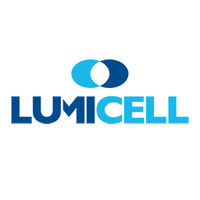预约演示
更新于:2025-05-07
Early gastric cancer
早期胃癌
更新于:2025-05-07
基本信息
别名 EGC - Early gastric cancer、Early Gastric Cancer、Early gastric cancer + [7] |
简介 An invasive adenocarcinoma confined to the mucosa or mucosa and submucosa of the gastric wall. The regional lymph nodes may or may not be involved. It usually occurs in the lesser curvature. The 5-year survival rate following resection is between 80 percent and 95 percent, and remains high even when lymph node metastases are present. |
关联
4
项与 早期胃癌 相关的药物靶点 |
作用机制 组织蛋白酶抑制剂 [+1] |
在研机构 |
原研机构 |
最高研发阶段批准上市 |
首次获批国家/地区 美国 |
首次获批日期2024-04-17 |
作用机制 质子泵抑制剂 |
在研机构 |
原研机构 |
最高研发阶段批准上市 |
首次获批国家/地区 中国 |
首次获批日期2023-02-14 |
作用机制 质子泵抑制剂 |
原研机构 |
最高研发阶段批准上市 |
首次获批国家/地区 中国 |
首次获批日期1988-12-31 |
365
项与 早期胃癌 相关的临床试验ChiCTR2500101108
A Study on the Pathogenesis of Gastric Mucosal Carcinogenesis Based on Spatial Transcriptomics
开始日期2025-05-01 |
申办/合作机构 |
NCT06934824
Clinical Study of Double-Endoscopic Combined With Minimally Invasive Treatment for Early Gastric Cancer at Clinical Stage T1b
For patients diagnosed with early gastric cancer involving submucosal invasion, super-ESD indications, or lymph node metastasis, a combination of preoperative endoscopic ultrasound and abdominal contrast-enhanced CT was utilized to ascertain the depth of tumor invasion and to identify any suspicious metastatic lymph nodes in the vicinity of the stomach. Subsequently, a local full-thickness resection, coupled with or followed by individualized precise lymph node dissection, was conducted to fulfill the following objectives: ① To investigate the safety, feasibility, and efficacy of local resection for patients meeting super-ESD criteria; ② To offer a clinical foundation for the individualized and precise lymph node dissection treatment of early gastric cancer.
开始日期2025-05-01 |
申办/合作机构 |
ChiCTR2500098666
Diagnostic ability of the novel system based on 'pink zoon pattern' for early gastric cancer: a multicenter, prospective, randomized controlled study
开始日期2025-04-07 |
申办/合作机构 |
100 项与 早期胃癌 相关的临床结果
登录后查看更多信息
100 项与 早期胃癌 相关的转化医学
登录后查看更多信息
0 项与 早期胃癌 相关的专利(医药)
登录后查看更多信息
8,069
项与 早期胃癌 相关的文献(医药)2025-12-31·Annals of Medicine
Artificial intelligence-assisted diagnosis of early gastric cancer: present practice and future prospects
Review
作者: Lei, Changda ; Kan, Xiuji ; Weng, Ruixia ; Sun, Wenqiang ; Li, Rui ; Wang, Kun
2025-12-01·Endoscopy
Underwater endoscopic submucosal dissection using gel immersion for early gastric cancer with situs inversus totalis
Article
作者: Mizumachi, Midori ; Fukuzawa, Masakatsu ; Muramatsu, Takahiro ; Itoi, Takao ; Utsumi, Yoshitaka ; Nagao, Toshitaka ; Kawai, Takashi
2025-12-01·Journal of Gastrointestinal Cancer
Expression of Salivary miRNAs, Clinical, and Demographic Features in the Early Detection of Gastric Cancer: A Statistical and Machine Learning Analysis
Article
作者: Fatahzadeh, Mahnaz ; Koopaie, Maryam ; Davoudi, Mansour ; Kolahdooz, Sajad ; Manifar, Soheila ; Arian-Kia, Sasan
90
项与 早期胃癌 相关的新闻(医药)2025-05-05
IGCC 2025微专辑扫描二维码可查看更多内容编者按由国际胃癌学会(IGCA)主办的第16届国际胃癌大会(IGCC 2025)将于2025年5月7~10日在荷兰阿姆斯特丹隆重召开。作为全球胃癌研究领域具影响力的学术盛会,本届大会将汇聚来自世界各地的顶尖专家学者,聚焦胃癌诊疗前沿进展。值得关注的是,中国专家将在多个专题会场发表重要研究成果,展现我国在该领域的学术影响力。经《肿瘤瞭望消化时讯》系统梳理会议日程,现共整理出20项中国专家入选的口头报告摘要标题(中英文对照)供读者预览。若有遗漏或表述偏差,诚挚欢迎学界同仁批评指正。一、5月8日专题报告Session 1a:分期专场时间:11:45中文标题:多参数MRI与双能CT在胃癌局部区域分期中的对比研究英文标题:Multiparametric MRI versus Dual-Energy CT in Gastric Cancer Locoregional Staging专家:Qiong Li,南京医科大学第一附属医院时间:12:05中文标题:基于优化淋巴结分期的胃癌新辅助治疗后ypTNM分期细化英文标题:Refined ypTNM Staging for Gastric Cancer After Neoadjuvant Therapy Based on Optimal Lymph Node Staging专家:Baolong Li,福建医科大学附属协和医院Session 1b:肿瘤内科-免疫治疗专场时间:11:45中文标题:术前免疫治疗与dMMR/MSI-H胃癌病理反应改善相关英文标题:Preoperative immunotherapy is associated with better pathological response in dMMR/MSI-H gastric cancer专家:Hong Zeng,复旦大学附属中山医院时间:12:05中文标题:蛋白质组学分析预测胃癌新辅助放化疗免疫疗效英文标题:Proteomic Analysis Predicts Therapeutic Outcomes of Neoadjuvant Chemo-immunotherapy in Gastric Cancer Patients专家:崔昊,中国人民解放军总医院第一医学中心Session 1c:胃肠病学/内镜/早期胃癌专场时间:11:55中文标题:全腹腔镜与腹腔镜辅助远端胃癌根治术对早期胃癌患者生活质量的影响分析英文标题:Morbidity and quality of totally laparoscopic versus laparoscopy-assisted distal gastrectomy for early gastric cancer’s life专家:黄华,复旦大学附属肿瘤医院Session 2a:肿瘤内科-靶向治疗专场时间:16:40中文标题:T细胞激活增强抗HER2介导的胃癌抗体依赖性细胞毒性英文标题:T-cell activation enhances anti-HER2-mediated antibody-dependent cellular cytotoxicity in gastric cancer专家:薛子睿,复旦大学附属中山医院Session 2b:放射肿瘤学专场时间:16:30中文标题:可切除食管胃结合部腺癌新辅助斯鲁利单抗联合放化疗的Ⅱ期更新结果英文标题:Neoadjuvant Serplulimab with Concurrent Chemoradiotherapy in Resectable Esophagogastric Junction Adenocarcinoma: Phase 2 Updated Results专家:赵林,北京协和医院时间:16:40中文标题:可切除食管胃腺癌放化疗价值的Meta分析英文标题:The value of chemoradiation therapy for resectable esopho-gastric adenocarcinomas: A meta-analysis of randomized clinical trials专家:Tao Fu,中日友好医院Session 2c:胃癌手术创新专场时间:16:40中文标题:D2+CME根治术对局部进展期胃癌的肿瘤学疗效:RCT三年随访结果英文标题:The oncological efficacy of D2+CME for locally advanced gastric cancer: 3-year outcomes of a RCT专家:龚建平,华中科技大学同济医学院附属同济医院二、5月9日专题报告3x接受口头摘要全体会议:HDGC/预康复专场时间:9:40中文标题:多学科预康复改善老年虚弱胃癌患者临床结局英文标题:Supervised multimodal prehabilitation to improve the clinical outcomes of frail elderly patients with gastric cancer专家:Yuqi Sun,青岛大学附属医院Session 3a:病理学/转化研究专场时间:11:55中文标题:FGFBP2+NK细胞作为胃癌免疫治疗预测性生物标志物的角色解析英文标题:Unraveling the Role of FGFBP2+NK Cells as Predictive Biomarkers in Gastric Adenocarcinoma Immunotherapy专家:潘宏达,复旦大学附属肿瘤医院Session 3b:人工智能与精准手术专场时间:11:45中文标题:机器学习模型预测胃癌患者术后并发症英文标题:Machine Learning Models for Predicting Postoperative Surgical Complications in Gastric Cancer Patients专家:Xiaohan Cui,山东大学齐鲁医院时间:12:05中文标题:基于多场景血管识别的AI驱动胃癌微创手术导航系统英文标题:AI-driven Surgical Navigation System based on Multi-scene Vessel Recognition for Minimally Invasive Gastric Cancer Surgery专家:Hao Chen,南方医科大学南方医院Session 3c:生活质量/支持治疗专场时间:11:55中文标题:中国胃癌手术质量与经济学评价:基于PACAGE研究分析英文标题:Surgical Quality and Economic Evaluation of Gastric Cancer Surgery in China: Analysis of PACAGE study专家:吴舟桥,北京大学肿瘤医院Session 4b:多模态治疗专场时间:16:30中文标题:AS与CAPOX在Ⅲ期胃腺癌术后化疗中的生存与安全性更新英文标题:AS versus CAPOX in postoperative chemotherapy for stage Ⅲ gastric adenocarcinoma patients: survival and safety update专家:俞鹏飞,浙江省肿瘤医院Session 4c:手术拓展-局限性Ⅳ期胃癌治疗专场时间:16:40中文标题:腹腔联合静脉化疗对比静脉紫杉醇+S-1治疗腹膜转移胃癌:DRAGON-01试验结果英文标题:Intraperitoneal+intravenous vs. intravenous paclitaxel+S-1 in gastric cancer with peritoneal metastasis: Results from DRAGON-01 trial专家:严超,上海交通大学医学院附属瑞金医院三、5月10日专题报告3x接受口头摘要全体会会议:手术专场时间:9:30中文标题:食管胃结合部腺癌纵隔淋巴结清扫的多中心队列研究中期分析英文标题:Lower mediastinal lymphadenectomy for adenocarcinoma of esophagogastric junction: interim analysis of a multicenter cohort study专家:李子禹,北京大学肿瘤医院时间:9:40中文标题:全腹腔镜与腹腔镜辅助全胃切除术疗效比较:CLASS08多中心RCT研究英文标题:The Efficacy of Totally Laparoscopic versus Laparoscopic-Assisted Total Gastrectomy: The CLASS08 Multicentre Randomized Controlled Trial专家:Qingya Li,南京医科大学第一附属医院Session 5a:肿瘤内科-新药与技术专场时间:11:55中文标题:替雷利珠单抗联合安罗替尼与XELOX一线治疗晚期胃/胃食管结合部腺癌(TALENT研究)英文标题:Tislelizumab Combined with Anlotinib and XELOX as First-Line Treatment for Advanced Gastric/Gastroesophageal Junction Adenocarcinoma (TALENT)专家:Ling Ma,南京医科大学第一附属医院Session 5c:视频专场:如何应对治疗失败时间:11:45中文标题:D2+CME手术技术演示英文标题:D2+CME surgery专家:龚建平,华中科技大学同济医学院附属同济医院综上,本届IGCC大会中,中国专家在胃癌的分期诊断、免疫治疗、微创手术、多学科预康复等领域贡献多项突破性研究成果,涵盖临床分期优化、新型靶向药物联合方案、AI手术辅助系统等技术进展。特别关注领域包括:免疫治疗标志物探索(如dMMR/MSI-H分型与FGFBP2+NK细胞)、手术技术创新(如D2+CME根治术、全腹腔镜操作安全性)、多学科综合治疗(新辅助放化疗、多学科预康复模式)等。这些研究不仅展现中国在胃癌诊疗领域的国际影响力,更为全球患者带来潜在诊疗方案优化契机。期待中国专家在阿姆斯特丹的学术舞台上发出更强音!(来源:肿瘤瞭望消化时讯)声 明凡署名原创的文章版权属《肿瘤瞭望》所有,欢迎分享、转载。本文仅供医疗卫生专业人士了解最新医药资讯参考使用,不代表本平台观点。该等信息不能以任何方式取代专业的医疗指导,也不应被视为诊疗建议,如果该信息被用于资讯以外的目的,本站及作者不承担相关责任。
临床2期免疫疗法
2025-04-22
中国胃癌患者中,早期胃癌占比很低,仅约20%,大多数发现时已是进展期,总体5年生存率不足50%。胃食管结合部癌通常指食管-胃解剖交界上下各5 cm区域以内的癌,跨越胃食管结合部,因其特殊的生理位置和解剖结构,其治疗方案在临床上备受关注。目前,人表皮生长因子受体 2(HER2)阳性的胃癌和胃食管结合部癌尚无标准的围手术期治疗方案,且如何有效治疗局部晚期胃癌以及胃食管结合部癌也仍是临床面临的挑战之一。近日,JAMA Oncology发表一项研究结果显示,对于可手术的局部晚期HER2阳性胃癌和胃食管结合部癌患者,相比于围术期曲妥珠单抗+XELOX方案(卡培他滨+奥沙利铂),阿替利珠单抗+曲妥珠单抗+XELOX方案可显著提高病理完全缓解率,翻高2.6倍(pCR,38.1% vs. 14.3%)。该研究通信作者为北京大学肿瘤医院彭智教授和沈琳教授。截图来源:JAMA Oncology这是一项开放性随机2期临床试验,于2021年2月至2022年11月在中国8家研究中心开展。所有患者均符合以下要求:1)经组织学确认为胃癌和胃食管结合部癌;2)HER2阳性;3)临床分期为cT3/T4a/T4b或N+,M023;4)美国东部肿瘤协作组评分为0~1分;5)预期寿命至少为12周。研究人员将患者以1:1的比例随机分配至A组和B组接受围手术期治疗,A组术前和术后均采用阿替利珠单抗+曲妥珠单抗+XELOX方案(术前和术后分别为3个和5个治疗周期),B组术前和术后均采用曲妥珠单抗+XELOX方案(术前和术后分别为3个和5个治疗周期)。研究结果显示,A组患者治疗后pCR率显著高于B组(38.1% vs. 14.3%),两组间差异为23.8%(90%CI:1.3%~44.7%,P=0.08)。A组达到pCR的患者基线时特征包含:1)年龄<65岁;2)男性;3)Lauren分型为肠型。该研究定义了主要研究终点和次要研究终点的组间比较标准,即组间差异值的P值<0.1且90%CI下限>0,则认为差异具有统计学意义。pCR:新辅助系统治疗后,对完整切除的胃癌和胃食管结合部组织标准进行病理检查,未发现存活的残存肿瘤细胞。A组和B组主要病理缓解(MPR)率分别为42.9%和19.0%,组间差异为23.9%(90%CI:0.1%~45.4%),差异有统计学意义。截至2023年10月1日,A组和B组中位随访时间均为15.7个月。两组的无事件生存期(EFS)、无病生存期(DFS)、总生存期(OS)数据均尚未成熟。两组患者新辅助治疗期间客观缓解率(ORR,28.6% vs. 33.3%,P=0.74)和R0切除率(95.2% vs. 90.5%,P>0.99)方面对比,均未观察到统计学差异性。安全性方面,两组患者均发生至少1例治疗相关不良事件。A组和B组3级及以上治疗相关不良事件发生率分别为57%和67%,主要为体重下降和中性粒细胞减少,未发现新的安全性事件。总之,本次研究结果表明,在可手术的局部晚期HER2阳性胃癌和胃食管结合部癌患者中,采取阿替利珠单抗+曲妥珠单抗+XELOX方案pCR可达到38.1%,且年龄<65岁、Lauren分型为肠型的男性患者更可能从治疗中获益,且治疗方案具有良好的安全性,为后续开展3期研究提供了数据支持。由于数据截止时,两组多项生存指标数据尚未成熟,因此还需更长时间的随访来评估患者治疗后的预后改善情况。点击文末“阅读原文/Read more”,即可访问JAMA Oncology官网阅读完整论文。推荐阅读欢迎投稿:学术成果、前沿进展、临床干货等主题均可,点此了解投稿详情。参考资料[1] Peng Z, Zhang X, Liang H, et al. Atezolizumab and Trastuzumab Plus Chemotherapy for ERBB2-Positive Locally Advanced Resectable Gastric Cancer: A Randomized Clinical Trial. JAMA Oncol. Published online April 17, 2025. doi:10.1001/jamaoncol.2025.0522[2] 中华人民共和国国家卫生健康委员会. 胃癌诊疗指南(2022年版)retrieved March 17.2022. from http://www.nhc.gov.cn/yzygj/s2911/202204/a0e67177df1f439898683e1333957c74/files/dfc6063ce0a441a5b6d9c7350cac2c2a.pdf免责声明:本文仅作信息交流之目的,文中观点不代表药明康德立场,亦不代表药明康德支持或反对文中观点。本文也不是治疗方案推荐。如需获得治疗方案指导,请前往正规医院就诊。版权说明:欢迎个人转发至朋友圈,谢绝媒体或机构未经授权以任何形式转载至其他平台。转载授权请在「医学新视点」微信公众号留言联系。如有其他合作需求,请联系wuxi_media@wuxiapptec.com分享,点赞,在看,传递医学新知
临床结果临床2期
2025-04-21
·荣昌生物
REMEGEN4月19日,“全程管理 全息发力——共创肿瘤患者管理新生态”全国肿瘤防治宣传周主题活动在北京举办。本次活动通过线下与线上直播联动形式,汇聚政府、医疗机构、企业、公益组织及患者群体代表,共同探讨肿瘤防治新路径。活动由“维爱同行”患者关爱项目主办、光明网支持。随着人口老龄化与生活方式的演变,肿瘤防治正面临发病率攀升与患者需求多元化的双重挑战。传统诊疗模式聚焦于疾病治疗,而现代肿瘤管理更强调“以患者为中心”的全周期服务,覆盖筛查预防、规范治疗、康复支持、心理干预等各环节。▲中国控烟与健康协会常务副会长兼秘书长、国家卫生健康委疾控局原一级巡视员贺青华中国控烟与健康协会常务副会长兼秘书长、国家卫生健康委疾控局原一级巡视员贺青华表示,我国癌症防治正经历从疾病治疗向全民健康管理转型、多领域协同作战体系重构及精准医学技术革命三大跨越。他介绍,《健康中国2030规划纲要》提出到2030年实现癌症5年生存率提高15%的目标,当前已构建国家-省-市-县四级防治网络,通过中央财政专项筛查资金、医保谈判推动抗癌药降价、肿瘤生物样本库建设等举措系统推进防治工作。针对肿瘤的全程管理,贺青华提出三点建议:一是深化控烟与防癌联动,力争2030年将15岁以上人群吸烟率降至20%;二是建立“筛查-诊断-治疗-康复-安宁”五位一体全程管理体系,融合AI随访与社区康复服务;三是强化基因检测、AI等科技支撑,绘制中国人癌症基因组图谱。▲北京大学泌尿外科研究所副所长何志嵩北京大学泌尿外科研究所副所长何志嵩表示,公众教育与健康意识提升是肿瘤防控的关键环节。“健康中国2030”规划提出的癌症五年生存率提升15%的目标,需全民参与实现。他呼吁,社会要避免对肿瘤的过度渲染,倡导将其纳入慢性病管理体系,“以管理高血压、糖尿病的心态对待肿瘤”,通过科学认知与规范管理提升患者生存质量。每个人都是健康中国的践行者,应从身边亲友的关爱出发,共同构建肿瘤防治的支持网络。▲荣昌生物首席执行官房健民博士荣昌生物首席执行官房健民博士表示,肿瘤防治需以科技创新构建全程管理新生态。荣昌生物积极响应“健康中国2030”战略,自主研发的维迪西妥单抗作为中国首个原创ADC药物,不仅填补了国内在该领域的空白,更为全球肿瘤治疗提供了中国方案。公司持续布局肿瘤免疫治疗、基因治疗等前沿领域。在产业生态方面,房健民提出三大发展路径:深化“产学研医”融合创新体系,开放研发平台推动跨领域合作;探索AI辅助药物设计、大数据研发应用;参与国际行业标准制定,助力中国创新药走向全球。他呼吁各界以患者需求为导向,通过系统化创新开创肿瘤防治新局面,加速创新药物临床转化,惠及更多患者。肿瘤全程管理高峰论坛:多学科共绘肿瘤防治新蓝图活动期间,围绕“构建肿瘤患者全程管理体系的挑战与机遇”“多方协同共建肿瘤患者管理新生态”等话题,来自不同领域的专家展开了深入讨论。在探讨构建肿瘤患者全程管理体系的挑战与机遇时,贺青华认为,烟草控制是肿瘤防治的“牛鼻子”,吸烟可产生250多种有害物质,69种致癌物质,是十多种肿瘤的主要诱因,能导致二十多种疾病死亡的增加。目前,我国已有医院将吸烟史纳入肿瘤诊疗问诊流程。针对基层控烟难点,他提出“政策+技术+文化”三位一体解决方案:开发电子病历戒烟提示系统、建立多学科戒烟团队、推动医保覆盖戒烟药物,并计划通过医疗大数据分析戒烟对肿瘤预后的影响。何志嵩教授从临床角度指出,肿瘤全程管理应注重早期健康生活习惯的培养、筛查和早期诊断。他强调,目前公众对健康体检存在认知误区,体检不应单纯依据价格选择套餐,而应根据个人状态、年龄、病史等进行个性化检查。同时,患者康复后的心理问题也不容忽视,医生应加强与心理专家的协作,为患者提供更全面的支持。中国抗癌协会肿瘤心理分会青年委员、心理咨询师唐婧将肿瘤心理危机分为“诊断期-治疗期-康复期-生命末期”四阶段,每个阶段都面临不同的心理挑战。其中,诊断期患者压力最大,容易产生死亡焦虑。她建议将心理咨询师纳入医疗体系,加强跨学科融合,为患者提供更专业的心理支持。同时,社会应加大对心理咨询的宣传和推广,提高公众对心理咨询的接受度。荣昌生物副总裁李建彬介绍了荣昌生物以患者为中心的理念在药物研发、生产和销售环节的落实情况,并表示荣昌生物只做 first-in-class 或 best-in-class 的产品,在产品研发阶段,基于临床需求开展工作;在产品开发时,与临床医生合作寻找最需要解决的临床问题;在产品商业化后,积极推动产品进入医保谈判,降低患者治疗负担。他认为,一个好药应具备疗效好、安全性高、患者买得起、买得到等特质。在讨论多方协同共建肿瘤患者管理新生态时,李建彬副总裁表示,荣昌生物拥有抗体平台、ADC平台、融合蛋白平台等先进技术,愿意与高校、科研机构、临床机构合作,将新的科学发现进行临床转化,服务患者。复旦大学附属中山医院泌尿外科主任郭剑明教授介绍了免疫治疗、ADC药物等创新疗法为肿瘤全生命周期带来的变革。他表示,这些创新疗法使肿瘤治疗从晚期不可手术的病人推向手术前的新辅助治疗,部分患者肿瘤消失,避免了手术,提高了治愈率;同时,创新疗法更加精准,副作用减少,提高了患者生活质量;此外,还可以通过检测手段提前预判药物疗效,实现精准选择。中国科普作协医学科普专委会副主委战钊认为,媒体在肿瘤防治中最大的意义在于助力“未病先防”,要加强科普内容的科学性把关,及时澄清认知误区和网络谣言,打击伪科普。同时,肿瘤科普要传递“可防可治”的积极信息,深化医学与人文深度融合,向全社会发出肿瘤防治科普的“好声音”。济仁慈善基金会副秘书长高阳介绍了慈善组织在推动多方协作中的角色和作用。他表示,慈善组织应扮演发起方、倡导者和平台方的角色,通过收集数据、评估项目公益性、必要性和迫切性,倡导社会关注,整合资源,制定规则,监督管理等方式,推动多方协同,为肿瘤患者提供切实帮助。医患对话直击热点:传递抗癌信心与希望在“对话医患同心”环节,医疗专家和患者代表共同讨论了肿瘤防治中的热点问题。天津医科大学第二医院肿瘤科主任王海涛、中山大学肿瘤防治中心泌尿外科主任尧凯、中日友好医院胃肠外科副主任医师符涛等专家,结合各自领域分享了常见肿瘤的致病原因、早期症状、治疗手段等知识。王海涛以乳腺癌为例,介绍了乳腺癌的发病因素,包括基因、环境、激素、生活方式、遗传等多维度因素的相互作用。他指出,长期口服避孕药、更年期激素替代、月经和生育史、遗传突变等都是乳腺癌的高危因素。尧凯介绍了膀胱癌的高危因素,如吸烟、工业致癌物质、寄生虫病、结石和炎症感染、放疗、某些药物以及遗传因素等。他提到,针对膀胱癌治疗,早期以电切治疗和膀胱内灌注为主,近年来免疫治疗、抗体偶联药物治疗等新型疗法取得突破,不仅提升了疗效,还减少了化疗的骨髓抑制、胃肠道反应等副作用。符涛分析了胃肠道肿瘤的发病因素,包括家族遗传性和散发型,其中幽门螺杆菌感染、饮食因素、肥胖等与胃肠道肿瘤的发生密切相关。他特别提醒,应避免过量食用过烫食物、隔夜菜,减少高盐饮食和高动物油脂的摄入。四川省武术协会名誉主席肖家泽先生作为膀胱癌康复患者,分享了自己的治疗经历和心路历程。在治疗过程中,他接受了电切手术,并使用了荣昌生物的抗体偶联药物治疗,取得了良好的治疗效果。他鼓励肿瘤患者要积极配合治疗,保持信心。专家们还针对不同肿瘤的早期预防和治疗进行了详细讲解。王海涛提醒,乳腺癌早期可能出现不明原因的消瘦、无痛性包块、乳腺溢液、腋窝淋巴结肿大等症状,女性应重视乳腺自查。尧凯强调,膀胱癌最常见的症状是血尿,无论是肉眼血尿还是镜下血尿,都应及时查明原因,不能轻易放过。符涛表示,早期肿瘤往往没有明显症状,对于胃肠道肿瘤,应重视早癌筛查,特别是40 - 75岁人群以及高风险人群,应定期进行胃肠镜检查等筛查手段。对于不同阶段肿瘤的治疗手段,尧凯介绍,膀胱癌的治疗手段包括手术、放疗、化疗、免疫治疗、抗体偶联药物治疗等,早期以电切治疗和膀胱内灌注为主,中晚期根据病情采用联合治疗方案。符涛表示,早期胃癌可以通过内镜下局部切除进行治疗,最大限度保留器官功能,提高患者生活质量;而中期和晚期胃癌的治疗则更为复杂,预后相对较差,但随着靶向药物等新型治疗手段的出现,患者的生存率和生活质量也在逐步提高。肿瘤患者全程管理需要政府、医疗机构、企业、科研机构、慈善组织、新闻媒体等多方协同合作,共同推进肿瘤防治事业的发展,为肿瘤患者创造更美好的未来,让更多患者在抗癌道路上感受到社会的温暖与支持。 来源 | 光明网编辑 | 春媛荣昌生物科创板上市 | 港交所上市挺进医保 | License out维迪西妥单抗 | 泰它西普RC28 | RC108 | RC118
免疫疗法抗体药物偶联物
分析
对领域进行一次全面的分析。
登录
或

生物医药百科问答
全新生物医药AI Agent 覆盖科研全链路,让突破性发现快人一步
立即开始免费试用!
智慧芽新药情报库是智慧芽专为生命科学人士构建的基于AI的创新药情报平台,助您全方位提升您的研发与决策效率。
立即开始数据试用!
智慧芽新药库数据也通过智慧芽数据服务平台,以API或者数据包形式对外开放,助您更加充分利用智慧芽新药情报信息。
生物序列数据库
生物药研发创新
免费使用
化学结构数据库
小分子化药研发创新
免费使用




